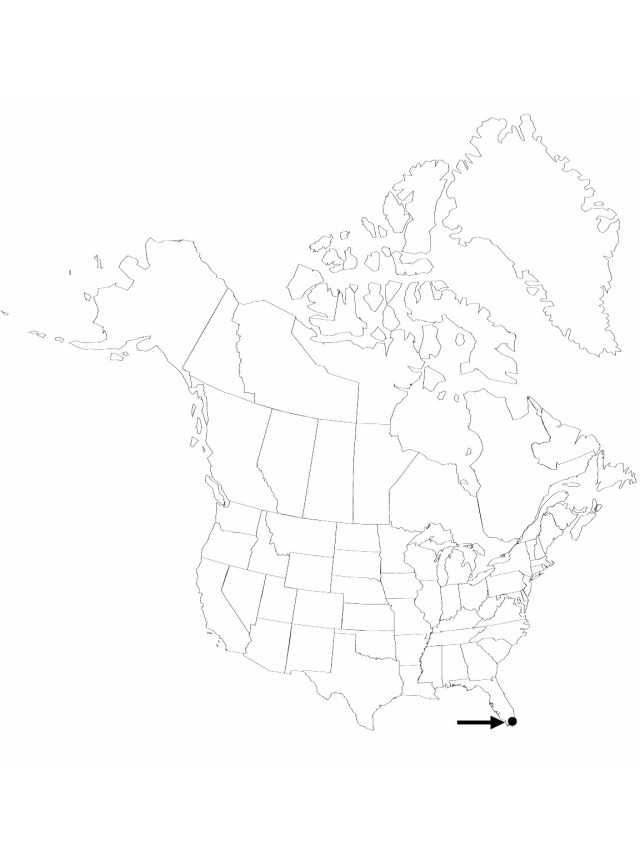Difference between revisions of "Maranta arundinacea"
Sp. Pl. 1: 2. 1753.
FNA>Volume Importer |
FNA>Volume Importer |
||
| Line 27: | Line 27: | ||
|elevation=0–10 m | |elevation=0–10 m | ||
|distribution=Fla.;native;s Mexico;West Indies;Central America;n South America (w Ecuador). | |distribution=Fla.;native;s Mexico;West Indies;Central America;n South America (w Ecuador). | ||
| − | |discussion=<p>Maranta arundinacea, cultivated for its starch-storing rhizome, is the mostly widely field-grown species of all the Marantaceae. In the early 1800s, it was commercially cultivated in Georgia and South Carolina (W. J. Titford 1812). This species is often referred to as St. Vincent arrowroot, after St. Vincent Island, West Indies, which is the major site of commercial production of the starch. The name arrowroot derives from its medicinal use as a poultice to remove arrow poison from wounds. The starch has also been used internally against ingested poison (R. Bentley and H. Trimen [1875–]1880, vol. 4, p. 265). Because the starch is so readily digested, it has been fed to infants, invalids, and those allergic to wheat. The cultivar 'Variegata,' with white and green variegated leaves, is often grown as an ornamental.</p> | + | |discussion=<p><i>Maranta arundinacea</i>, cultivated for its starch-storing rhizome, is the mostly widely field-grown species of all the Marantaceae. In the early 1800s, it was commercially cultivated in Georgia and South Carolina (W. J. Titford 1812). This species is often referred to as St. Vincent arrowroot, after St. Vincent Island, West Indies, which is the major site of commercial production of the starch. The name arrowroot derives from its medicinal use as a poultice to remove arrow poison from wounds. The starch has also been used internally against ingested poison (R. Bentley and H. Trimen [1875–]1880, vol. 4, p. 265). Because the starch is so readily digested, it has been fed to infants, invalids, and those allergic to wheat. The cultivar 'Variegata,' with white and green variegated leaves, is often grown as an ornamental.</p> |
|tables= | |tables= | ||
|references= | |references= | ||
| Line 52: | Line 52: | ||
|publication year=1753 | |publication year=1753 | ||
|special status= | |special status= | ||
| − | |source xml=https://jpend@bitbucket.org/aafc-mbb/fna-data-curation.git/src/ | + | |source xml=https://jpend@bitbucket.org/aafc-mbb/fna-data-curation.git/src/8f726806613d60c220dc4493de13607dd3150896/coarse_grained_fna_xml/V22/V22_279.xml |
|genus=Maranta | |genus=Maranta | ||
|species=Maranta arundinacea | |species=Maranta arundinacea | ||
Revision as of 16:57, 18 September 2019
Plants erect, 0.3–1.3 m. Rhizomes tuberous, thickened. Stem often branched above. Leaves: basal 4–8, cauline 1–8; sheath auriculate, 4.5–31 cm, margins and apex densely pilose to nearly glabrous; petiole often absent in cauline leaves, 3.5–20 cm; pulvinus 0.2–1.8 cm, adaxially tomentose; blade ovate, 3.5–35 × 3–11 cm, basal leaves largest, abaxially glabrous to minutely pilose, adaxially sparsely minutely pilose. Inflorescences: bracts 1–2(–3), 2.4–6 cm; common pedicel of flower pair 2.3–5.5 cm. Flowers: sepals 10–17 mm; corolla white, corolla tube curved, 12–14 mm; staminodes white; ovary tan, densely pubescent, rarely glabrous or nearly glabrous. Fruits green or tinged red-brown, 8 × 4–5 mm. 2n = 18, 2n = 48.
Phenology: Flowering summer–winter.
Habitat: Hammocks and moist soil
Elevation: 0–10 m
Distribution

Fla., native, s Mexico, West Indies, Central America, n South America (w Ecuador).
Discussion
Maranta arundinacea, cultivated for its starch-storing rhizome, is the mostly widely field-grown species of all the Marantaceae. In the early 1800s, it was commercially cultivated in Georgia and South Carolina (W. J. Titford 1812). This species is often referred to as St. Vincent arrowroot, after St. Vincent Island, West Indies, which is the major site of commercial production of the starch. The name arrowroot derives from its medicinal use as a poultice to remove arrow poison from wounds. The starch has also been used internally against ingested poison (R. Bentley and H. Trimen [1875–]1880, vol. 4, p. 265). Because the starch is so readily digested, it has been fed to infants, invalids, and those allergic to wheat. The cultivar 'Variegata,' with white and green variegated leaves, is often grown as an ornamental.
Selected References
None.
